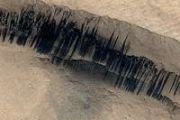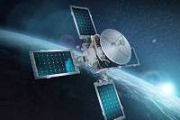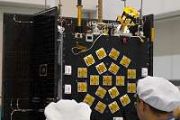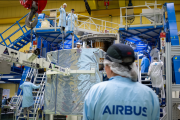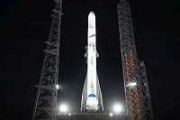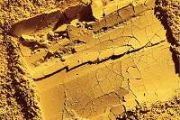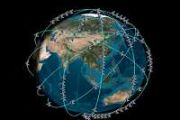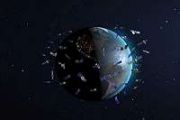
Copernical Team
Total solar eclipse 8 April 2024
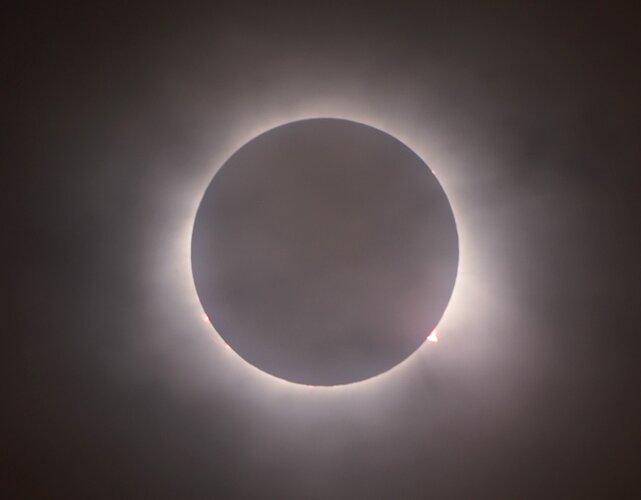 Image:
Total solar eclipse 8 April 2024
Image:
Total solar eclipse 8 April 2024 Rocket Lab secures Space Force contract for STP-S30 launch
 Rocket Lab USA, Inc. (Nasdaq: RKLB) has been awarded a $14.49 million task order by the U.S. Space Force (USSF) to launch an Electron mission from Launch Complex 2. The mission, called Space Test Program-30 (STP-S30) falls under the Space Systems Command (SSC) Assured Access to Space organization and is part of Orbital Services Program-4 (OSP-4).
The dedicated Electron launch is scheduled
Rocket Lab USA, Inc. (Nasdaq: RKLB) has been awarded a $14.49 million task order by the U.S. Space Force (USSF) to launch an Electron mission from Launch Complex 2. The mission, called Space Test Program-30 (STP-S30) falls under the Space Systems Command (SSC) Assured Access to Space organization and is part of Orbital Services Program-4 (OSP-4).
The dedicated Electron launch is scheduled TrustPoint Secures AFWERX Phase II Contract for Advanced Navigation Solutions
 TrustPoint has secured a Phase II Small Business Technology Transfer (STTR) contract from AFWERX, valued at $1.6 million, aimed at advancing resilient navigation technologies for the Department of the Air Force (DAF).
AFWERX, in collaboration with the Air Force Research Laboratory, has refined the Small Business Innovation Research (SBIR) and STTR processes to expedite proposals, broaden a
TrustPoint has secured a Phase II Small Business Technology Transfer (STTR) contract from AFWERX, valued at $1.6 million, aimed at advancing resilient navigation technologies for the Department of the Air Force (DAF).
AFWERX, in collaboration with the Air Force Research Laboratory, has refined the Small Business Innovation Research (SBIR) and STTR processes to expedite proposals, broaden a The Role of the Media in the Space Economy: The Kennedy Years to Current Day
 More than six decades ago, astronaut Neil Armstrong made history by being the first person to set foot on the surface of the Moon. At the time, this crucial point of the Apollo 11 mission became the most-watched television broadcast in history - with an estimated 600 million people watching from around the world, it was a giant broadcast for a slowly emerging technology.
More than six decades ago, astronaut Neil Armstrong made history by being the first person to set foot on the surface of the Moon. At the time, this crucial point of the Apollo 11 mission became the most-watched television broadcast in history - with an estimated 600 million people watching from around the world, it was a giant broadcast for a slowly emerging technology. Q-Tech Introduces AXTAL OCXOs for Enhanced Satellite Bandwidth and Radiation Hardness
 Q-Tech Corporation, a prominent provider of space-qualified crystal oscillators and high-performance frequency control systems, has unveiled the AXTAL AXIOM75Sx Series oven-controlled crystal oscillators (OCXOs). These are specifically engineered for high-performance timing and frequency generation in low-earth orbit (LEO) satellite applications.
The AXIOM75Sx Series, developed by Q-Tech's
Q-Tech Corporation, a prominent provider of space-qualified crystal oscillators and high-performance frequency control systems, has unveiled the AXTAL AXIOM75Sx Series oven-controlled crystal oscillators (OCXOs). These are specifically engineered for high-performance timing and frequency generation in low-earth orbit (LEO) satellite applications.
The AXIOM75Sx Series, developed by Q-Tech's SwRI Advances Robotics for In-Space Manufacturing at Annual Space Symposium
 Southwest Research Institute has enhanced its investment in space robotics to support the space industry's progress in in-space servicing, assembly, and manufacturing (ISAM). At the 38th Space Symposium from April 8-11 in Colorado Springs, the Intelligent Systems Division of SwRI will showcase their latest ISAM-oriented research at Booth #237.
SwRI is crafting solutions that integrate Eart
Southwest Research Institute has enhanced its investment in space robotics to support the space industry's progress in in-space servicing, assembly, and manufacturing (ISAM). At the 38th Space Symposium from April 8-11 in Colorado Springs, the Intelligent Systems Division of SwRI will showcase their latest ISAM-oriented research at Booth #237.
SwRI is crafting solutions that integrate Eart New Multidirectional Electron Detector to Advance Aurora Studies
 The enigmatic aurora borealis, known for its visual spectacle, is propelled by energetic electrons whose complex dynamics are not yet fully comprehended. Current tools used to study these electrons are limited by their capability to sample multiple energies swiftly. To address this, NASA has developed a new tool that drastically improves the frequency and detail of measurements by a significant
The enigmatic aurora borealis, known for its visual spectacle, is propelled by energetic electrons whose complex dynamics are not yet fully comprehended. Current tools used to study these electrons are limited by their capability to sample multiple energies swiftly. To address this, NASA has developed a new tool that drastically improves the frequency and detail of measurements by a significant Chang'e 6 Mission to Include European Science Instruments
 China's Chang'e 6 lunar mission is set to carry significant European scientific instruments, adding a layer of international collaboration to its ambitious objectives. The mission aims to collect samples from the less-explored lunar far side, a feat not yet accomplished by previous missions.
The China National Space Administration highlights the inclusion of three European payloads. A rado
China's Chang'e 6 lunar mission is set to carry significant European scientific instruments, adding a layer of international collaboration to its ambitious objectives. The mission aims to collect samples from the less-explored lunar far side, a feat not yet accomplished by previous missions.
The China National Space Administration highlights the inclusion of three European payloads. A rado Astrobotic Collaborates with LZH and TU Berlin on Lunar 3D Printing Project
 Astrobotic, in collaboration with Laser Zentrum Hannover e.V. (LZH) and Technical University Berlin (TU Berlin), is embarking on the MOONRISE project, aiming to implement 3D printing technology on the Moon. LZH has engaged Astrobotic for a lunar mission scheduled for late 2026, focusing on the utilization of laser technology to create lunar structures from regolith.
I am excited to announc
Astrobotic, in collaboration with Laser Zentrum Hannover e.V. (LZH) and Technical University Berlin (TU Berlin), is embarking on the MOONRISE project, aiming to implement 3D printing technology on the Moon. LZH has engaged Astrobotic for a lunar mission scheduled for late 2026, focusing on the utilization of laser technology to create lunar structures from regolith.
I am excited to announc Ariane 6 Set for Maiden Voyage with Robusta-3A Satellite Aboard
 Europe's latest heavy-lift launcher, Ariane 6, is set to embark on its inaugural flight, carrying a diverse array of missions including Earth observation, deep space exploration, and critical technology testing. The versatility of Ariane 6 will be demonstrated as it undertakes its first mission with varied payloads and objectives.
Recent years have seen an increase in extreme weather event
Europe's latest heavy-lift launcher, Ariane 6, is set to embark on its inaugural flight, carrying a diverse array of missions including Earth observation, deep space exploration, and critical technology testing. The versatility of Ariane 6 will be demonstrated as it undertakes its first mission with varied payloads and objectives.
Recent years have seen an increase in extreme weather event 










